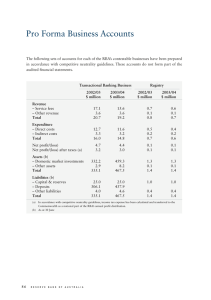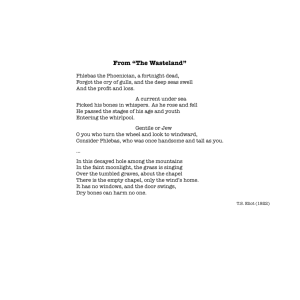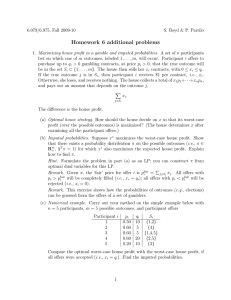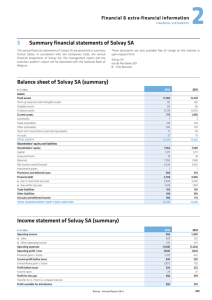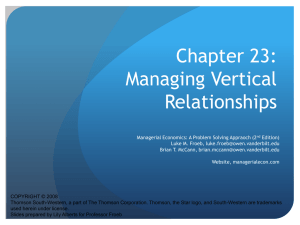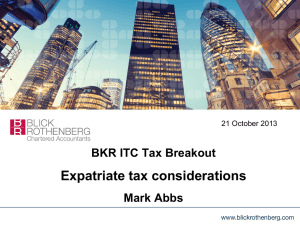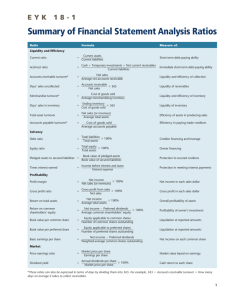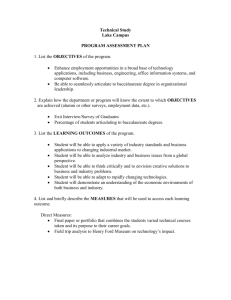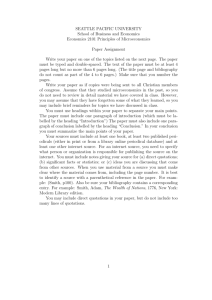International Schools
advertisement
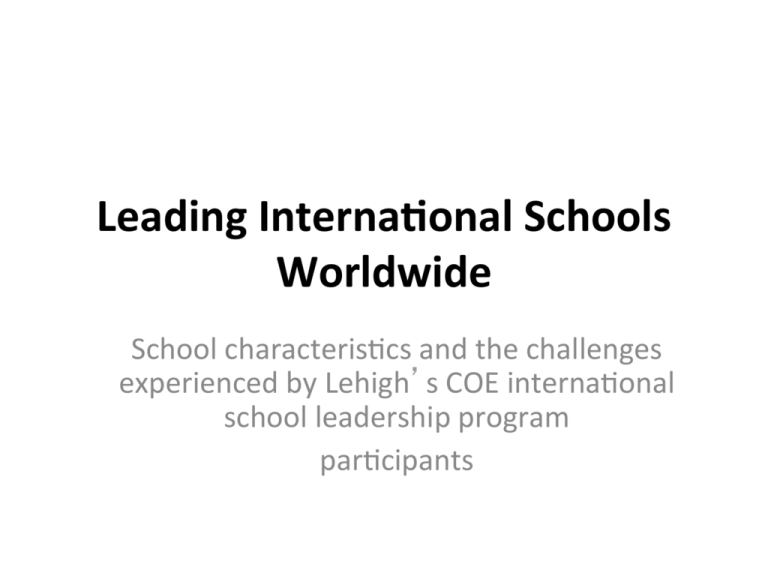
Leading Interna+onal Schools Worldwide School characteris-cs and the challenges experienced by Lehigh’s COE interna-onal school leadership program par-cipants Interna-onal School Types 1. Not-­‐For-­‐Profit Community Schools • Many started life as American Curriculum Schools a@ached/ supported by the US Embassy • Now run by Boards of Trustees -­‐ typically with elected parent members, and appointed sustaining members • Have evolved to offer an ‘interna-onal’ educa-on – may include US High School Cer-ficates, Interna-onal Baccalaureate Programs, and host country cer-fica-on • Characterized by the employment of expatriate teachers (as opposed to host country na-onal teachers) and students from many different na-onali-es Interna-onal School Manila, Philippines Interna-onal School of Kuala Lumpur, Malaysia Riding the Asian Tiger: Boom Times • • • • K-­‐12, approximately 2000 students, 60-­‐70 different na-onali-es – $12-­‐30,000 annual fees – wai-ng lists 60-­‐90% foreign hire teachers -­‐ US, UK, Canada, Australia and New Zealand Income almost en-rely from fees ($36 million in KL) Operate in two currencies Big Issues: Space; Host country/expatriate contracts and benefits; Limi-ng local student enrollment G Interna+onal School Types 2. Schools run by companies or founda+ons -­‐ non-­‐profit or for-­‐ profit 3. For-­‐profit, private owner schools Brand new school – for upper income Chinese looking for a ‘western’ education . Joint Venture Enterprise of the International Schools Service (ISS) and U-Link Education Group of China, with additional support from the Fok Ying Tung Foundation managed by the Fok family of Hong Kong. Nasha College Preparatory Academy, Guangzhou Issues : Isola+on • School has 27 expatriate teachers, teaching a US curriculum to Advanced Placement level • Nansha is a developing green city on the Pearl River Delta • Close to big ci-es, including Macao and Hong Kong but feel of a small, rural town • Travel difficult – teachers feel isolated Japanese Soap Opera? • Pre-­‐K – 12 with 280 students • Started as a kindergarten by an expat. married to a Japanese husband • 36 teachers, most expats but not recruited abroad Issues: Ownership and Parent Coup; Exit of Foreign Companies American School of Bombay Founded 1981 – 780 students, 90% expat. – highly transient – but school of choice for expatriate families 10 member board of trustees;160 faculty, 60% expat;100 local support staff Issues: High housing and building costs Increasing competition and high tuition cost. Harare International School, Zimbabwe • 1992 – not for profit - 8 member elected board – US Department of State sponsored • K-12- 526 students, 50% nonAfrican • American and International Baccalaureate programs • 65 expat teachers – 30 Zimbabwean teaching assistants Issues: • Local economy and granting of visas • Cap on enrollment • Housing for teachers Harare International School, Zimbabwe Chaos in Cairo? • Beginnings School, Cairo, Egypt • Five years old – 6 private owners – PreK-­‐12 • 540 students, 90% Egyp-an : American curriculum and western-­‐based teaching methodology Owners predict 7-­‐10% profit when school reaches 700 students Issues: Government regula-ons Impor-ng resources – finding expat. teachers Owners businessmen, not educators The American International School, Cyprus Crisis in Cyprus? • Privately owned school • Compe--on from other schools keeps fees low • Poor teacher package leads to high teacher turnover Issue Plunge in enrollment due to banking and other corporate families leaving aker the economic crisis. American School of Warsaw, Poland – Rumblings of Revolt? • Embassy linked, non-­‐profit, K-­‐12 school, founded in 1953 • US standards but offers Interna-onal Baccalaureate Diploma (11-­‐12 grades) • 115 teachers ( 70% expat.) • 900 students, limit of 25% Polish Issues: Fluctuating currency; EU regulations, transient student population; aging building Time to make a profit? Colegio Britanico of Cartagena, Colombia A buy out – but whose buying? • • • • • A Bri-sh curriculum school founded 1981 K-­‐12 620 students, most well off Colombians 64 teachers, only 10 are foreign hire Well known and well respected Non-­‐profit – 4 member Board of Trustees School has recently been bought by Knightsbridge Schools Interna+onal -­‐ rumors that a Saudi Prince is involved! International School of Panama Founded 1981 – US curriculum but offers IB Diploma and Panamanian Diploma Non-profit 9 member Board of Directors 1,145 students, 60% from Latin America 175 teachers, 54 foreign hire Issues • Compe--on from other new interna-onal schools • Fluctua-ons in enrollment – high now because Brazilian companies are undertaking some large infra-­‐structure projects Marian Baker School, San Jose, Costa Rica A dying breed? • Proprietary school – 2 owners – use an Advisory Board of community stakeholders • Founded in 1984 – K-­‐12 -­‐ US and Costa Rican curriculum – 284 student maximum – no growth planned • 45 administrators and faculty – 9% foreign hire • High School tui-on -­‐ $12,000 – no significant profits registered for the past decade. A small community-­‐oriented school that maintains high academic standards Laredo Middle School, Cherry Creek, Colorado Uses the Interna-onal Baccalaureate Middle Years Program Issue: Teacher evalua-ons linked to student outcomes Part 2: International School Teacher Recruitment Where would you be now if you were an interna-onal school CEO? On the Road Teacher Recruitment Fairs Sydney, Australia Bangkok, Thailand Dubai, Dubai London, UK Boston, USA Queens, Canada What will you be carrying? Vacancy list Best fit teacher profile Data on available candidates What Will You Do at the Recrui+ng Fairs? Speed da-ng ? And when you come home jetlagged and exhausted……. Part 3: Interna+onal School Research on Leadership and Recruitment Topic: Retaining teachers – leadership e ffect teacher reten-on by Ques+on: Do you increase being a transforma-onal leader? Method: Iden-fied tranforma-onal leaders Asked them to iden-fy top 10% of their teachers All of their faculty were surveyed for the most important factor influencing their decision to go or stay Guess the results….. 1. What had the greatest effect on the top 10% of teachers regarding their staying or leaving? 2. What had the greatest effect on the rest of the teachers regarding their staying or leaving? (Leadership? Pay and condi-ons? Wanderlust and greener pastures?) For the top 10% of teachers Which transforma3onal leadership trait was most strongly related to teachers’ decisions to remain at the school? 1. Idealized influence (role-­‐modeling) 2. Inspira-onal mo-va-on (op-mism, enthusiasm, ability to point out the posi-ve) 3. Intellectual s-mula-on 4. Individualized considera-on
